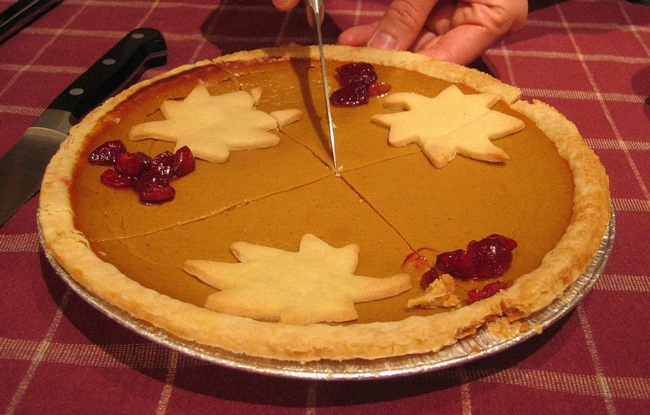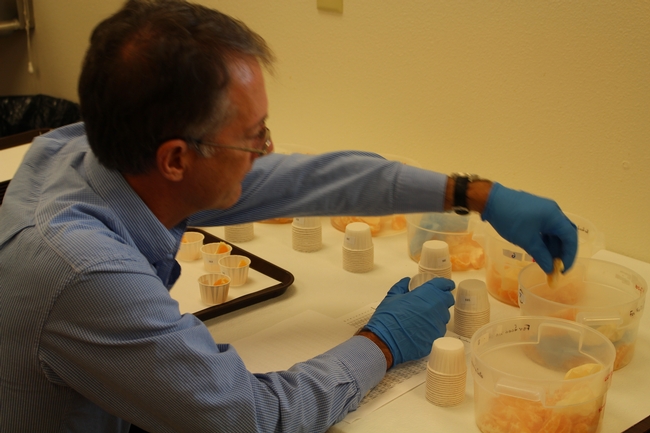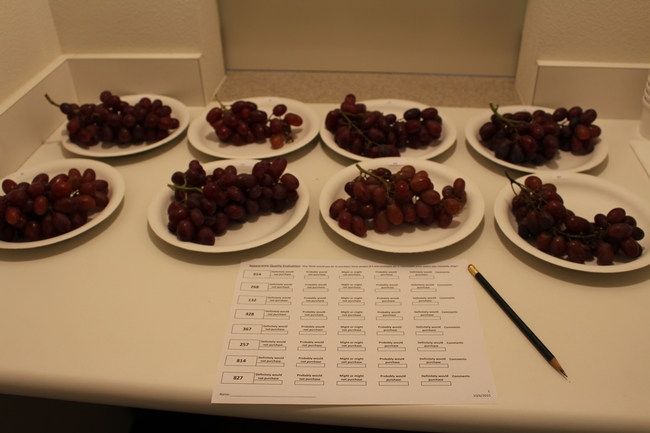Mouth-watering anticipation of holiday food is part of the science of sensory evaluation. (Photo: Pixabay.com)
Your sense of taste, smell, sight, hearing and touch sends signals to your brain that the holiday feasting season has arrived. These basic senses are the tools that influence how much you like – or dislike – the foods you eat.
Sensory evaluation also has practical applications in agriculture. UC Agriculture and Natural Resources researchers and their colleagues often conduct sensory panels for specific food crop studies. Recently volunteer evaluators filed into the sensory evaluation lab at the UC Kearney Agricultural Research and Extension Center to participate in a grape sensory panel. UC researcher Mary Lu Arpaia and USDA researcher David Obenland collected data for a study on the impacts of various storage conditions on grape varieties.
David Obenland of the USDA prepares citrus samples for evaluation.
“There's a bit of psychology involved as well. How the product looks can influence your perception of how it tastes. To further eliminate bias, evaluators are intentionally isolated in individual stations so as not to be influenced by their neighbors' reactions,” explained David Obenland.
Grapes are displayed for evaluators to rate fruit appearance.
The sensory evaluation lab at the Kearney Agricultural REC reflects the current philosophy of fruit commodity research that the industry's focus should be on sensory evaluation, from new pest management to horticultural practices to varietal improvements. The lab was completed and dedicated in April 2008 with support from the California Avocado Inspection Committee, Citrus Research Board, Food Machinery Corporation, Peach, Plum and Nectarine Growers of California, Sunkist and Table Grape Commission.
Author: Roberta Barton


